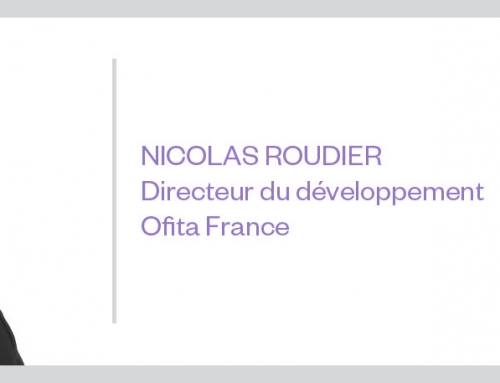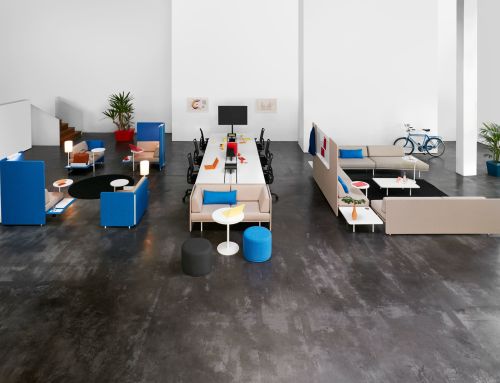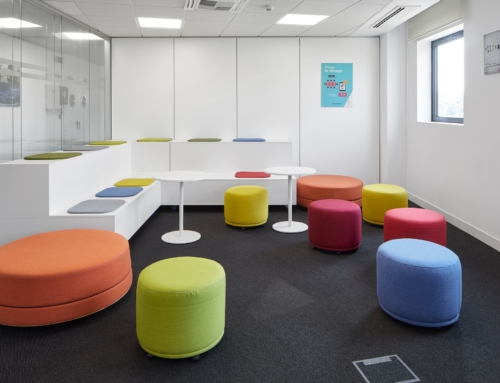“Informal areas” were born as a result of the development of new forms of working. Everything is constantly evolving: the global market, the complexity of problems and, for these reasons, man is forced to adapt to the new times and new forms of work. Nowadays we work together constantly but it is difficult to collaborate with each other if there are no areas to do so. The trends to improve employee productivity are open spaces which enable communication and teamwork, with design, appropriate lighting, ergonomics, multitasking technology… The new habitat of the office worker focuses on creating comfortable, functional and attractive environments in order to perform tasks more effectively.
The informal areas
Picture your office, how is it designed? Let me guess, probably long corridors without a place to meet because the enormous meeting rooms are always booked and are too big for a small number of people. We then end up sitting on a chair at our colleagues’ workplace because we have no place to meet. This situation has finally ended and new forms of work provide solutions to these everyday needs, enabling informal meetings with colleagues near our workplace without disturbing the rest.
Let’s think of the leading companies in the world at Silicon Valley, where creativity is nurtured by an approach they call “Innovation Time Off”. Employees are encouraged to spend 20% of their time developing their own ideas, which generally require recruitment and collaboration with other co-workers. Half of the recently launched products, including Gmail, Google News and AdSense were born at these informal meetings.
Spaces that encourage productivity
Companies are trying to find ways to encourage and support informal areas which work effectively according to a company’s corporate culture and seeking for the satisfaction and productivity of workers. Informal areas are usually used between 15-30 minutes by a maximum of 5 people. These spaces must be comfortable, colourful and equipped with useful tools such as excellent connectivity or sound-absorbing panels to avoid the propagation of sound. There is a real need for these informal areas today as more than 50% of the work is done in teams.
These informal meetings are not always previously scheduled. This is why some companies opt for rooms which can change shape using separation panels according to the number of people who get together and the tasks they are going to carry out. This new office model is in expansion. The informal nature of these meetings is defined by their characteristics: spontaneous, informal, improvised… Companies are coming to the realisation of the increasing need for these informal work areas, not as an area for coffee but as a place to work. The need for employees to generate revolutionary and innovative ideas make these areas essential inside an office.




